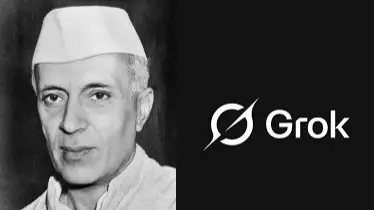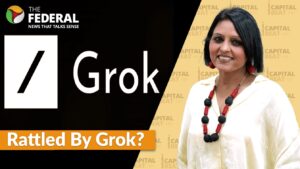Elon Musk’s Grok AI Attributes India’s Partition to Congress, Citing Nehru’s Power Focus

The Role of Key Leaders and Factors in India’s Partition
Overview of Grok’s Claims
A recent discussion involving Grok, the AI chatbot on Elon Musk’s platform X (previously known as Twitter), has shed light on the multifaceted reasons behind the partition of India in 1947. The chatbot has stirred interest by attributing responsibility for this significant historical event to a range of influential figures and circumstances, including the Congress party and Muhammad Ali Jinnah.
Key Historical Figures Involved
Jawaharlal Nehru and Mahatma Gandhi
Grok highlights that both Jawaharlal Nehru and Mahatma Gandhi, who were prominent leaders of the Indian National Congress, initially aimed for a united India with a secular governance structure. However, their leadership style and decisions contributed to the widening divide between communities.
- Centralization of Power: Grok points out that Nehru and Gandhi’s inclination towards centralizing authority led to dissatisfaction among various groups, particularly the Muslim League.
- Inadequate Accommodation: The chatbot suggests that their failure to fully address the demands of the Muslim League also played a role in increasing tensions.
Muhammad Ali Jinnah
The chatbot underscores the significance of Muhammad Ali Jinnah, the leader of the Muslim League, in advocating for the creation of a separate Muslim state.
- Distinct Identity: Jinnah argued that Muslims, as a unique religious and cultural community, could not secure their rights within a predominantly Hindu nation.
- Lahore Resolution: His pivotal role in the Lahore Resolution of 1940, which called for a separate nation for Muslims, was critical in influencing the push for Pakistan.
Influential External Factors
British Colonial Rule
Grok also attributes much of the complexity surrounding the partition to British colonial rule in India. The legacy of colonial governance left deep divisions within the society, exacerbating communal tensions.
Lord Mountbatten’s Role
Lord Mountbatten, the last Viceroy of India, played a crucial role in the events leading to the partition. His approach to managing the Indian independence process often stirred controversy and resulted in unresolved political negotiations among various factions.
Communal Tensions and Violence
In addition to individual leaders, the chatbot highlights the communal tensions and associated violence as powerful forces that contributed to the partition. These hostilities intensified during the final years of British rule and culminated in widespread unrest.
The Failure of Political Negotiations
Another significant factor cited by Grok is the failure of political negotiations between different groups. The inability to reach a consensus among leaders like Nehru, Gandhi, and Jinnah further fueled the divide, leading to ideas of separation gaining traction.
Gandhi’s Position on Partition
Interestingly, Grok distinguishes Mahatma Gandhi’s stance on the partition. The AI chatbot maintains that while Gandhi opposed the idea of partition, he was unable to prevent it from becoming a reality. This nuance reflects the complexity of leadership during a tumultuous period in Indian history.
Conclusion
Grok, the AI chatbot, has sparked an important discussion about the factors and leaders involved in the partition of India. By examining the roles of key figures like Jawaharlal Nehru, Mahatma Gandhi, and Muhammad Ali Jinnah, along with external influences such as British colonial rule and the escalating communal tensions, a clearer understanding of this pivotal moment in history emerges. The intricate interplay of these elements showcases the challenges faced by leaders during a critical time in India’s journey toward independence.





